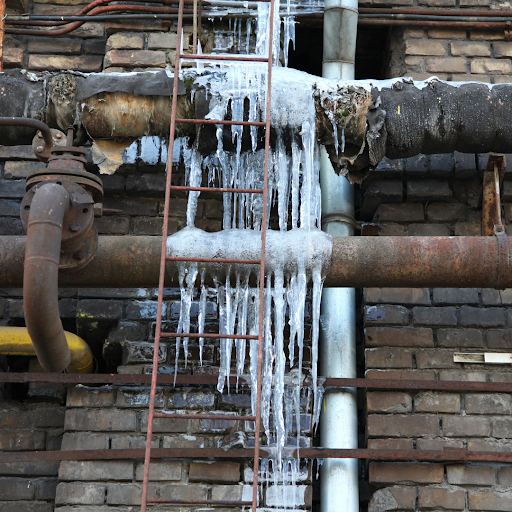Essential Tips to Protect Against Frozen Plumbing in Winter
Essential Tips to Protect Against Frozen Plumbing in Winter
Blog Article
This article listed below about Prevent Frozen Pipes is definitely enjoyable. You should take a peek.

Winter can damage your pipes, specifically by freezing pipes. Right here's just how to prevent it from occurring and what to do if it does.
Intro
As temperature levels drop, the danger of icy pipelines rises, possibly resulting in expensive repair services and water damage. Recognizing just how to stop icy pipelines is crucial for property owners in cold climates.
Recognizing Icy Pipes
What causes pipes to freeze?
Pipelines ice up when revealed to temperatures below 32 ° F (0 ° C) for extended periods. As water inside the pipes ices up, it increases, taxing the pipeline wall surfaces and possibly creating them to break.
Dangers and problems
Icy pipelines can bring about water disturbances, property damages, and pricey repair services. Burst pipes can flooding homes and create considerable structural damage.
Indicators of Frozen Water Lines
Identifying icy pipes early can prevent them from breaking.
How to identify icy pipes
Look for decreased water flow from faucets, uncommon odors or noises from pipelines, and noticeable frost on subjected pipelines.
Avoidance Tips
Protecting vulnerable pipelines
Wrap pipes in insulation sleeves or use heat tape to protect them from freezing temperature levels. Focus on pipes in unheated or exterior areas of the home.
Home heating techniques
Keep indoor rooms appropriately warmed, particularly areas with plumbing. Open up cupboard doors to permit warm air to flow around pipes under sinks.
Protecting Outside Pipes
Garden tubes and exterior faucets
Separate and drain pipes yard tubes prior to winter season. Set up frost-proof spigots or cover exterior taps with protected caps.
What to Do If Your Pipes Freeze
Immediate activities to take
If you believe icy pipes, maintain taps available to ease pressure as the ice melts. Use a hairdryer or towels soaked in hot water to thaw pipelines slowly.
Long-Term Solutions
Architectural adjustments
Take into consideration rerouting pipelines away from outside wall surfaces or unheated areas. Include additional insulation to attic rooms, basements, and crawl spaces.
Updating insulation
Invest in top quality insulation for pipelines, attic rooms, and walls. Appropriate insulation helps preserve regular temperatures and decreases the threat of frozen pipes.
Final thought
Preventing frozen pipelines requires proactive steps and fast feedbacks. By recognizing the causes, signs, and preventive measures, property owners can secure their pipes throughout winter.
5 Ways to Prevent Frozen Pipes
Drain Outdoor Faucets and Disconnect Hoses
First, close the shut-off valve that controls the flow of water in the pipe to your outdoor faucet. Then, head outside to disconnect and drain your hose and open the outdoor faucet to allow the water to completely drain out of the line. Turn off the faucet when done. Finally, head back to the shut-off valve and drain the remaining water inside the pipe into a bucket or container. Additionally, if you have a home irrigation system, you should consider hiring an expert to clear the system of water each year.
Insulate Pipes
One of the best and most cost-effective methods for preventing frozen water pipes is to wrap your pipes with insulation. This is especially important for areas in your home that aren’t exposed to heat, such as an attic. We suggest using foam sleeves, which can typically be found at your local hardware store.
Keep Heat Running at 65
Your pipes are located inside your walls, and the temperature there is much colder than the rest of the house. To prevent your pipes from freezing, The Insurance Information Institute suggests that you keep your home heated to at least 65 degrees, even when traveling. You may want to invest in smart devices that can keep an eye on the temperature in your home while you’re away.
Leave Water Dripping
Moving water — even a small trickle — can prevent ice from forming inside your pipes. When freezing temps are imminent, start a drip of water from all faucets that serve exposed pipes. Leaving a few faucets running will also help relieve pressure inside the pipes and help prevent a rupture if the water inside freezes.
Open Cupboard Doors
Warm your kitchen and bathroom pipes by opening cupboards and vanities. You should also leave your interior doors ajar to help warm air circulate evenly throughout your home.

I hope you enjoyed reading our piece about Winter Plumbing Precautions: Preventing Frozen Pipes. Thank you so much for finding the time to read our posting. I beg you take the opportunity to share this blog if you liked it. Thanks for your time spent reading it.
Book Services Report this page